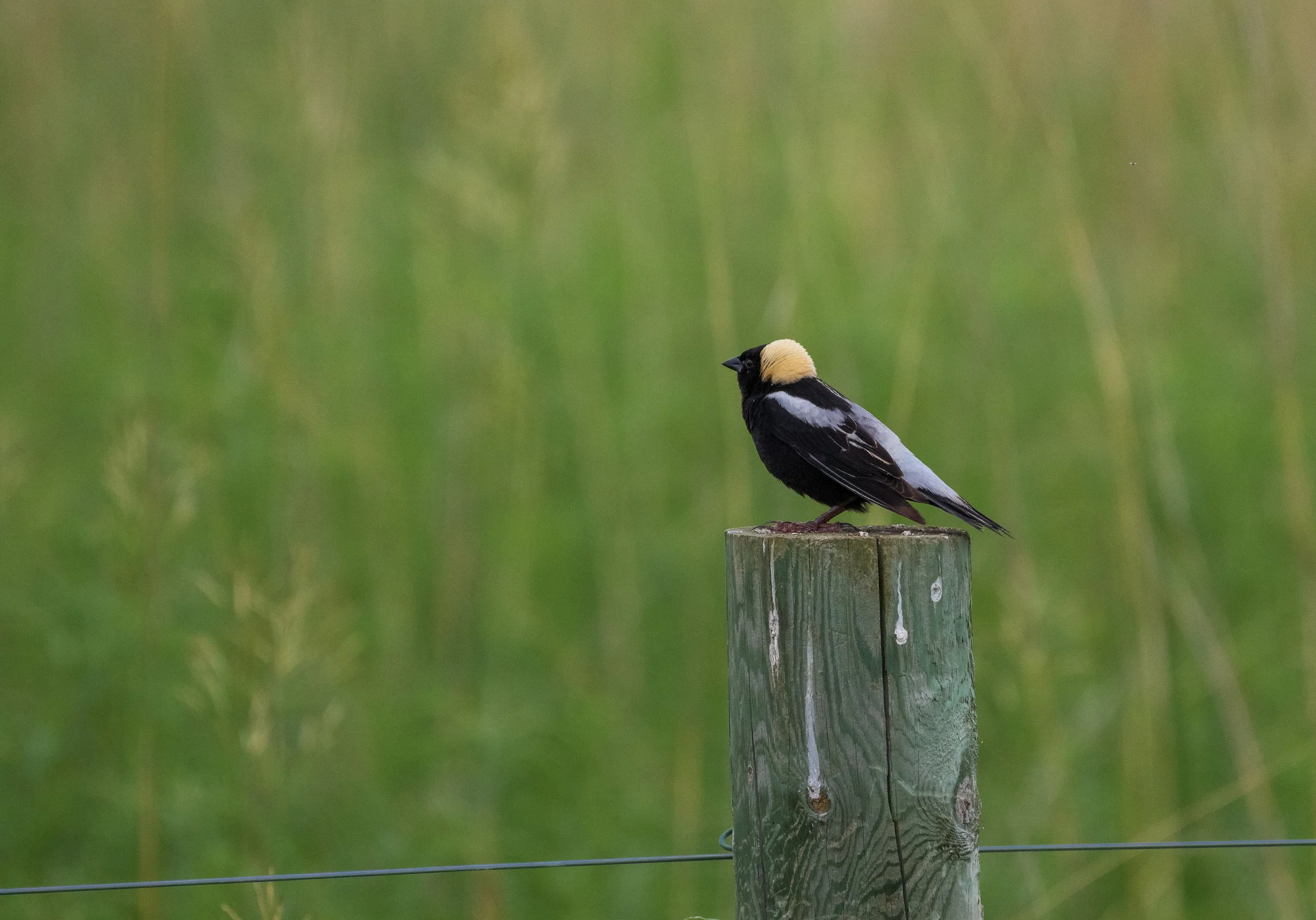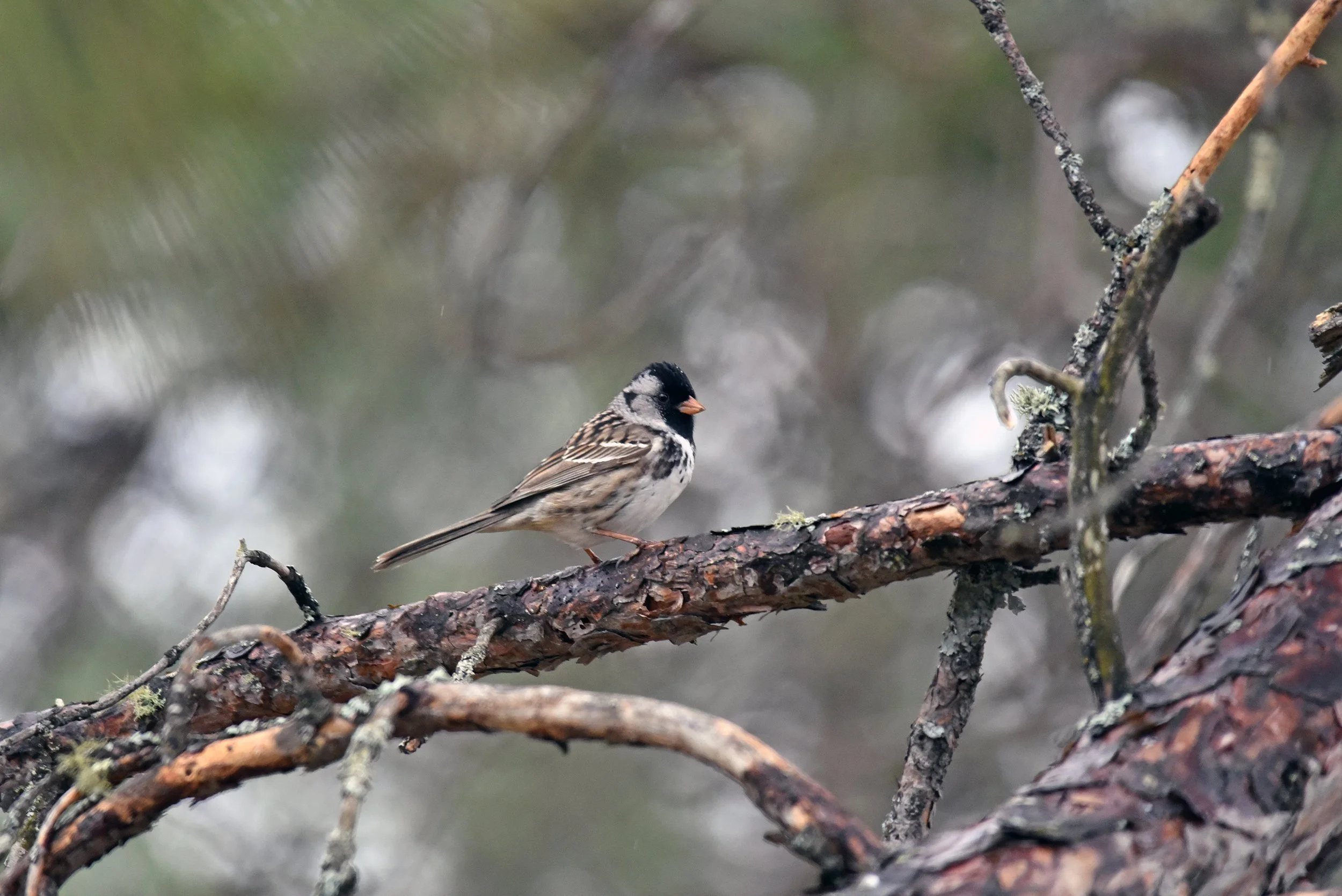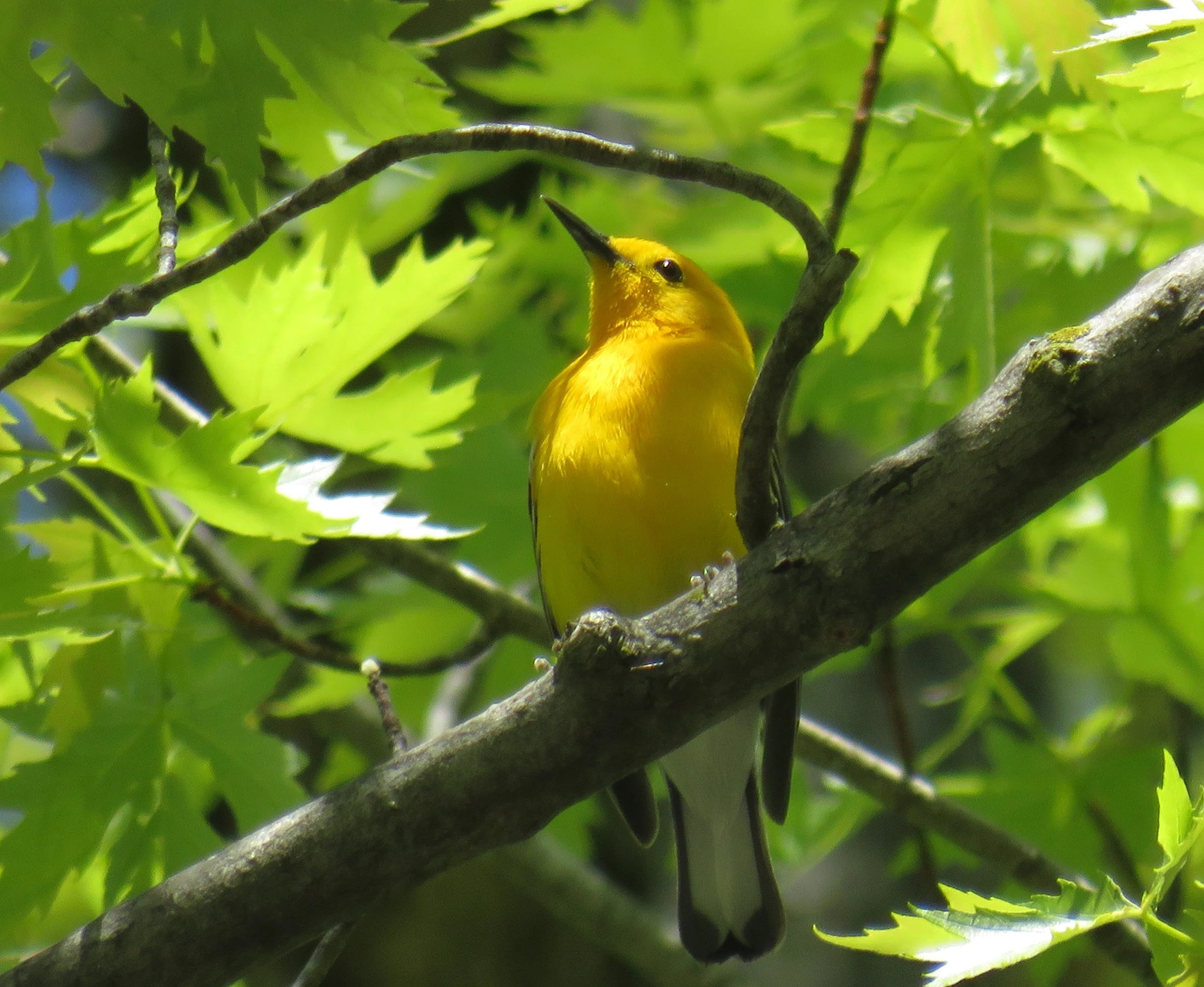Goose Pond Sanctuary’s
Friday Feathered Features
This blog series focuses on a bird species, project, or event that is timely, interesting, and fun! The weekly write-ups alternate between sanctuary teams. Below are some of the most recent articles written by Goose Pond Sanctuary’s team. You can read all of the Goose Pond FFF posts here, access a PDF of all Goose Pond FFF posts by topic here, and enjoy all Friday Feathered Features here.
Goose Pond Sanctuary’s Most Recent features
Lapland Longspurs will migrate through and winter in southern Wisconsin, first showing up in late October and departing after the first half of April.
photo by Andy Reago & Chrissy McClarren
Multiple days passed before I realized that the flit out of the corner of my eyes happened way too consistently to be my imagination, so I started paying closer attention.
Photo by Andy Reago & Chrissy McClarren
For three days during my internship this summer, I had the opportunity to conduct bird point counts at Southern Wisconsin Bird Alliance's newly acquired property: Hillside Prairie Sanctuary.
Photo by Mike Budd/USFWS
We asked Goose Pond’s ecological restoration interns what observations or experiences stuck out to them from their summer on the prairie.
Photo by Tucker Sanborn/SoWBA
We are very fortunate to have Red-headed Woodpeckers—our favorite oak woodland and savanna species—at our Wildland cabin year round for the past couple of years.
photo by Jeff Galligan
In 2025, Goose Pond Sanctuary has the best nesting habitat conditions for overwater nesting birds that we have seen since becoming managers in 1979!
USFWS photo
The Reckless Wrens’ 13th Great Wisconsin Birdathon venture began at 5:00 PM on Friday, May 17 and ended at 4:49 PM on May 18. Considering the weather overall was cool and windy, our grand total was a very impressive 157 species, a new team record!
Photo by Kelly Colgan Azar
Only a handful of White-faced Ibis sightings have been recorded in the state with most accounts coming from Horicon Marsh.
Photo by Kaitlin Svabek
The annual Crane Count, coordinated by the International Crane Foundation, was held on April 12. It was a beautiful morning to count cranes and enjoy the wetland birds.
Photo by Graham Steinhauer/SoWBA
The properties owned and managed by Southern Wisconsin Bird Alliance in Columbia County are teeming with life. From birds, insects, mammals, and herptiles to fungi, lichens, and plants, there is no shortage of species to discover.
Photo by Jim Otto
In this feature, we share updates on species from three raptor projects. Thanks to everyone involved with this research, including the donors that generously funded the transmitters and the researchers.
Photo by Monica Hall
In 2023, we were contacted by Kelly VanBeek, Midwest Grassland and Native Seed Strategy Coordinator with the US Fish and Wildlife Service, who was working on a Common Grackle research project.
Photo by Anne Readel
The 2024 Poynette Christmas Bird Count was held on December 28. Forty-seven participants (a high number) counted 74 species.
Photo by Bill Smith
Thanks to eBird, we are able to identify changes in the species and numbers of birds observed at Goose Pond Sanctuary, Erstad Prairie, and Otsego Marsh.
Photo by Ted Keyel
Although I’d consider a number of species to be more spherical than White-breasted Nuthatches (Horned Larks, kinglets, and many warblers), few have such an optimistic stance.
Photo by Kelly Colgan Azar
Harris’s Sparrows are large, chunky birds with long tails and pink bills. When they become adults, they develop a black bib, face, and crown.
Photo by Courtney Celley/USFWS
Monarch tagging is really the perfect activity. It allows us to pursue major goals at Goose Pond Sanctuary and aligns nicely with the mission of Southern Wisconsin Bird Alliance.
Photo by Mark Martin
Earlier this year, 11 nest box volunteers monitored a whopping 156 boxes at Goose Pond, Erstad Prairie, and Otsego Marsh.
Photo by Arlene Koziol
We asked our three full-time interns what observations or experiences stuck out to them from their summer on the prairie.
Photo by Emma Raasch/SoWBA
We enjoy hearing and (rarely) seeing Virginia Rails. In late July at our Wildland property near Rio, we had an extended look at this secretive bird.
Photo by Arlene Koziol
Unlike their relative, the House Sparrow, the Eurasian Tree Sparrow is not a bird of cities, instead using farms and lightly wooded residential areas.
Photo via Pixabay
Cuckoos are secretive, so spotting them and making an identification only by their bill color is difficult. Both can be found in the same habitats which adds some complication to ID, but there are a couple other good ways to tell them apart.
Photo by Andy Reago and Chrissy McClarren
This is the Reckless Wrens’ 12th year participating in the Great Wisconsin Birdathon. Our team visited 21 locations, submitted 28 eBird checklists, and detected a total of 143 species!
Photo by Carolyn Chee
Many bird watchers look forward to the annual crane count coordinated by the International Crane Foundation. This year, it was held on April 13.
Photo by Gary Shackelford
Ring-necked Ducks (Aythya collaris) are named for a chestnut ring encircling the necks of the drakes, but it is faint and can only be seen at close range or with a bird in hand.
Photo by Gary Shackelford
The Gray Partridge (Perdix perdix) is a game bird in the pheasant family. Perdix is Latin for partridge. They were introduced into North America in the early 1900s from Hungary and Czechoslovakia.
Photo via Pixabay
We’ve been observing the changing winter residents at Goose Pond Sanctuary and Mark and Sue’s cabin in Rio (Wildland LLC) for 23 years. We can expect to find a few familiar faces each year; however, the numbers of those expected winter residents may change, and we also may get a few surprises.
Photo by Eric Begin
Ring-necked Pheasants are a nonnative species brought to Wisconsin in 1916 as a game bird. Management at Goose Pond has primarily focused on the restoration of native habitat to support native species, though pheasants also benefit from these practices.
Photo by Ralph Russo
From mugs to sweaters and holiday cards, the striking red of the male Northern Cardinal can be spotted more times in my grandma’s living room than at my bird feeders.
Photo by Arlene Koziol
Banner photo: Browne Prairie in autumn by Madison Audubon


































Although natural cavities can be provided by leaving standing dead trees, the easiest way to supply ample nesting cavities is to build and install songbird boxes.
Photo by Arlene Koziol